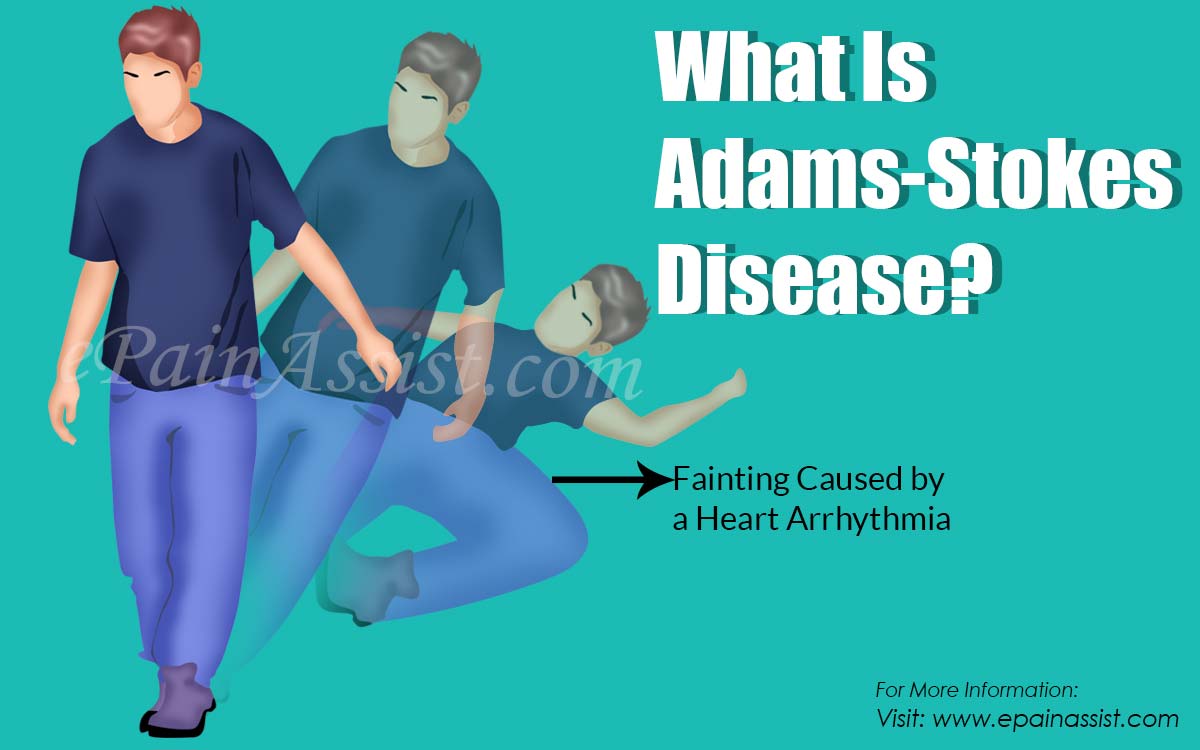What Is Adams-Stokes Disease?
Adams-Stokes Disease is a pathological condition characterized by syncopal spells with or without convulsions. This condition is mainly caused due to an abnormality in the heart rhythm in which there is blockage of signals from the upper to the lower ventricles of the heart. As a result of this, there is reduced blood flow to the brain due to the heart beating too slowly. This is what results in loss of consciousness or syncopal spells. These spells last at maximum for a minute or so.
At times, due to the hypoxia that occurs in the brain as a result of decreased blood flow the affected individual may also experience convulsions. Medically speaking, Adams-Stokes Disease occurs when the electrical signals emanating from the sinus node or the atrium get blocked at the AV node preventing the signals from traveling to the ventricles.
Adams-Stokes Disease usually occurs in individual with a previous cardiac condition usually a third degree heart block. This blockage of signals may result in asystole or a condition where the heart stops beating completely for a few seconds causing reduced flow of oxygen to the brain causing the symptoms characteristic of Adams-Stokes Disease.

What Causes Adams-Stokes Disease?
As stated, a previous history of a cardiac condition especially heart blocks are the main cause of Adams-Stokes Disease. These heart blocks may be formed as a result of decreased blood flow to the heart caused as a result of myocardial infarction, certain medications, a condition called as hyperkalemia in which an individual has elevated levels of potassium in the blood, congenital heart conditions, old age, abnormality in the aortic and mitral valves of the heart, and in some cases complications after a surgical procedure.
In some cases, infections like rheumatic fever, endocarditis, Lyme disease, and mononucleosis can also cause Adams-Stokes Disease. In rare cases, conditions like tumors, sarcoidosis or amyloidosis may also result in development of Adams-Stokes Disease.
What Are The Symptoms of Adams-Stokes Disease?
An episode of Adams-Stokes Disease tends to occur out of the blue without any warning and the individual may lose consciousness. In some cases, there may be paleness or hypoperfusion seen just before an attack of it.
The affected individual may lose consciousness for about half a minute before regaining consciousness. In some cases, during the period of the patient losing consciousness there may be twitching or abnormal movements of the extremities noticed which stop after the individual regains consciousness.
Breathing is not affected during an attack of it. If an attack occurs while the patient is asleep, he or she may not even know about the attack except that they may feel hot and flushed when waking up which tends to suggest that the individual might have had an attack of Adams-Stokes Disease.
How Is Adams-Stokes Disease Diagnosed?
A diagnosis of Adams-Stokes Disease can be made by taking a detailed history of the patient, the symptoms experienced, the duration of the symptoms, any prior history of a cardiac problem like a myocardial infarction, or other conditions indicating a heart block.
The physician may also inquire about how the patient feels after regaining consciousness and whether there is any facial flushing, lethargy, paleness after an episode.
If there is a suspicion for Adams-Stokes Disease, then further investigations with an EKG or cardiac catheterization may be performed to look at the status of the heart and to look at the extent of the block and the stage of it. If the block is present in or around the AV node then a diagnosis is confirmed of it.
How Is Adams-Stokes Disease Treated?
Initially, just after an episode of Adams-Stokes Disease, the treatment involves administration of medications like isoprenaline and epinephrine. This will treat the condition temporarily.
For a more permanent fix, surgical implantation of a pacemaker is the most preferred treatment of it. A temporary pacemaker may be placed during the initial stages of treatment which then is replaced by a permanent pacemaker for treatment of Adams-Stokes Disease.
It is imperative that after implantation of a permanent pacemaker that the patient be monitored on a regular basis to check whether the pacemaker is working appropriately or not so that future attacks can be prevented of Adams-Stokes Disease.
What Is The Prognosis For Adams-Stokes Disease?
If Adams-Stokes Disease remains undiagnosed and is not treated then it can result in potentially serious complications; however, if the affected individual gets a timely diagnosis and appropriate treatment then the prognosis is quite excellent for a condition like Adams-Stokes Disease.
